The Norwegian flag is a vivid emblem, weaving together the nation’s heritage and aspirations. It captures the essence of Norway, resonating deeply with its citizens, and creates a narrative of Norway’s storied past and its optimistic outlook for the days ahead.
Flag of Norway
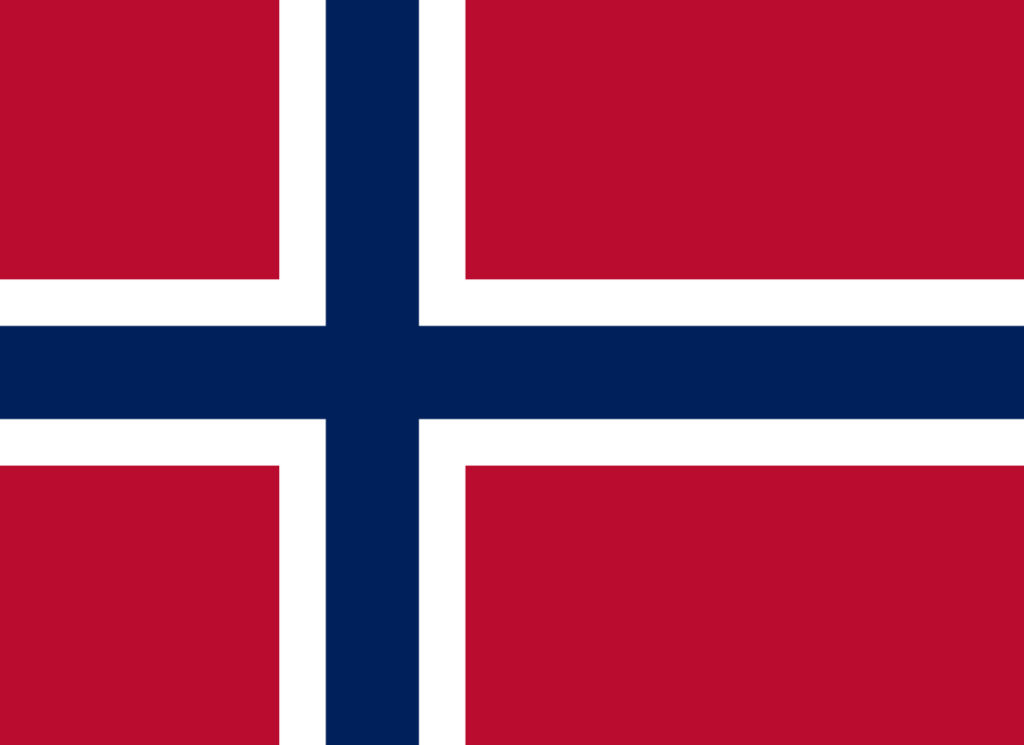
The Norwegian flag is distinguished by its simple yet distinctive design: a deep red field intersected by a Nordic cross in blue, edged in white. The cross, extending to the edges of the flag, is a nod to Norway’s Christian heritage and its connection to other Scandinavian nations.
This design, free from complex emblems or symbols, makes the flag immediately recognizable and serves as a strong visual representation of Norway’s national identity and cultural connections within the region.
Flag of Norway: Color Palette
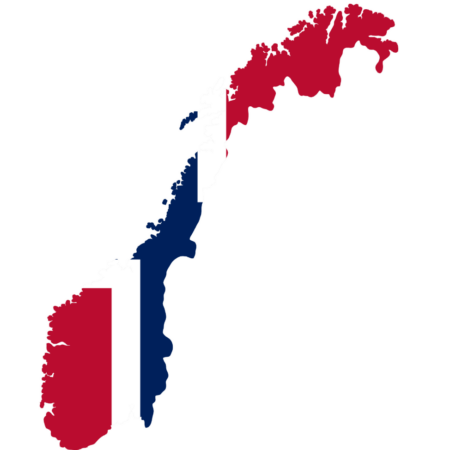
Norway Flag Emoji: 🇳🇴
The color palette of the Norwegian flag is both striking and symbolic, comprising a trio of hues deeply rooted in the nation’s character. These colors blend to form a visual expression uniquely representative of Norway, setting the stage for a deeper exploration of each color’s significance in the following section.
Meaning of Each Color
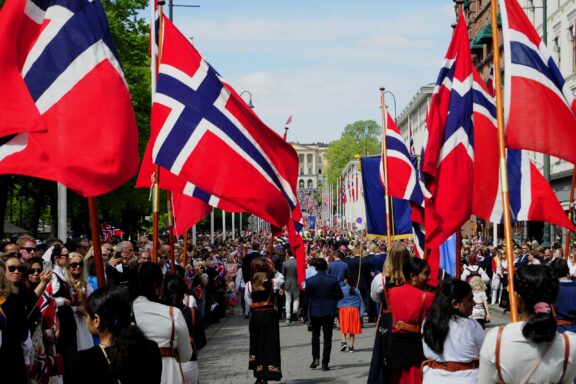
Red
The red color in the Norwegian flag is a powerful symbol reflecting the country’s historical struggles and journey towards independence.
This vibrant hue embodies the spirit of resilience and determination that has characterized the Norwegian people through various challenges in their history. Red also represents Norway’s valor and strength, acknowledging its citizens’ courage in shaping the nation’s destiny.
White
White in the Norwegian flag stands for honesty and integrity. This color is emblematic of the ethical and moral values that are deeply ingrained in Norwegian culture.
White also brings a sense of balance and contrast to the flag, highlighting the other colors and reinforcing the importance of clarity and purity in the national ethos.
Blue
The blue cross, encapsulated in white, signifies loyalty and the nation’s connection to the Nordic region. This color choice reflects Norway’s historical and cultural ties to other Scandinavian countries, emphasizing a shared heritage and mutual bonds.
The blue, while not as dominant as the red and white, adds depth and contrast to the flag, symbolizing the nation’s steadfast commitment to its principles and Nordic identity.
Norway’s Coat of Arms
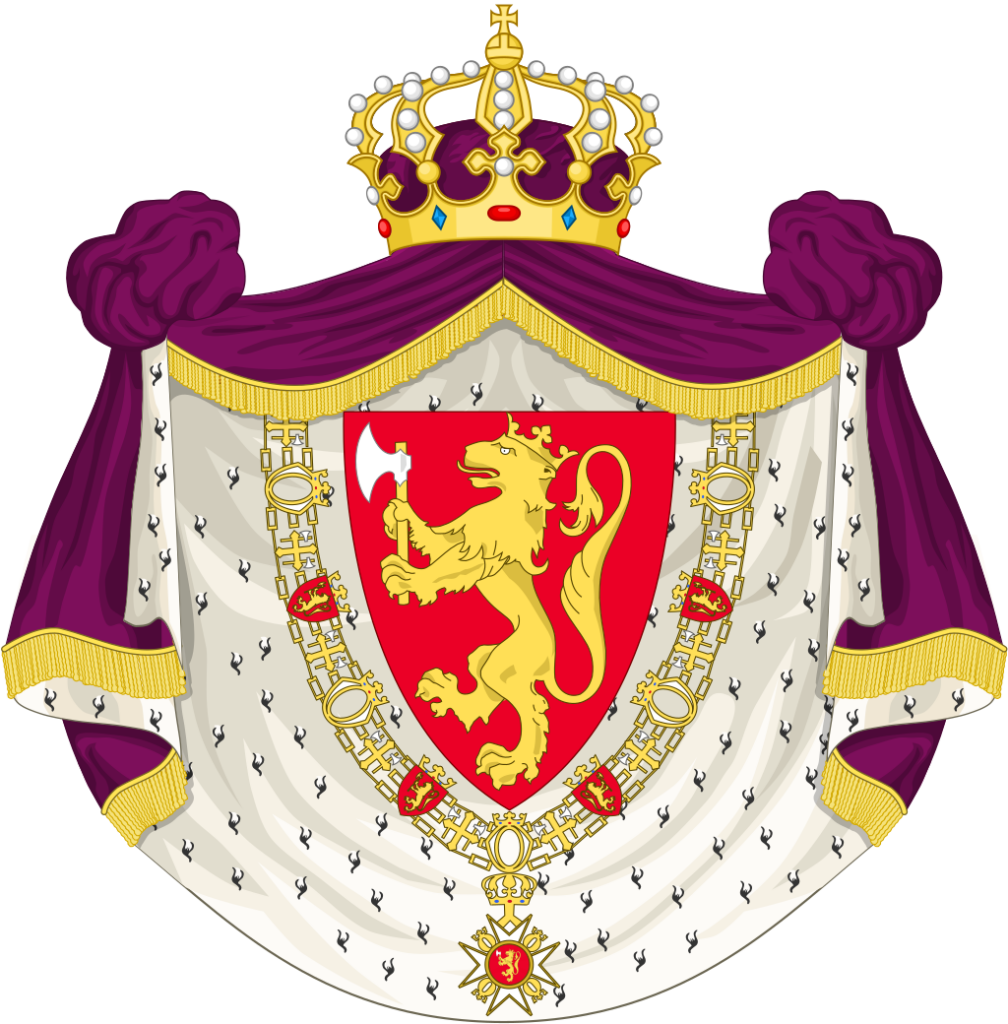
Norway’s Coat of Arms is an intricate symbol with various elements, each with historical and cultural significance. Here’s a breakdown of its key components:
- Main Shield: The shield’s primary color is red, symbolizing bravery, strength, and courage. It features a golden lion, representing Norway’s strength and courage, and an axe, symbolizing its readiness to defend itself and its historical role as a seafaring nation.
- The Golden Lion: This majestic animal symbolizes the invincibility and strength of the Norwegian monarchy. Historically, the lion was seen as a formidable and undefeated creature, making its appearance on official emblems a symbol of power.
- The Axe: The axe, a traditional weapon among Norwegians, represents military power and the nation’s readiness to defend its sovereignty. Its association with Saint Olav further enhances its cultural and religious significance.
- The Crown: Positioned above the shield, the crown signifies the royal heritage of Norway. It represents the country’s monarchy, respect for tradition, and historical continuity.
- Motto: The Latin motto “Unanimiter et constanter,” meaning “united and steadfast,” reflects Norway’s commitment to unity, solidarity, and adherence to its values and traditions.
- Historical and Familial Ties: The Coat of Arms has evolved to include or exclude certain symbols based on the political and cultural context, reflecting the country’s historical connections and familial ties..
Historical Evolution and the Meaning Behind Changes
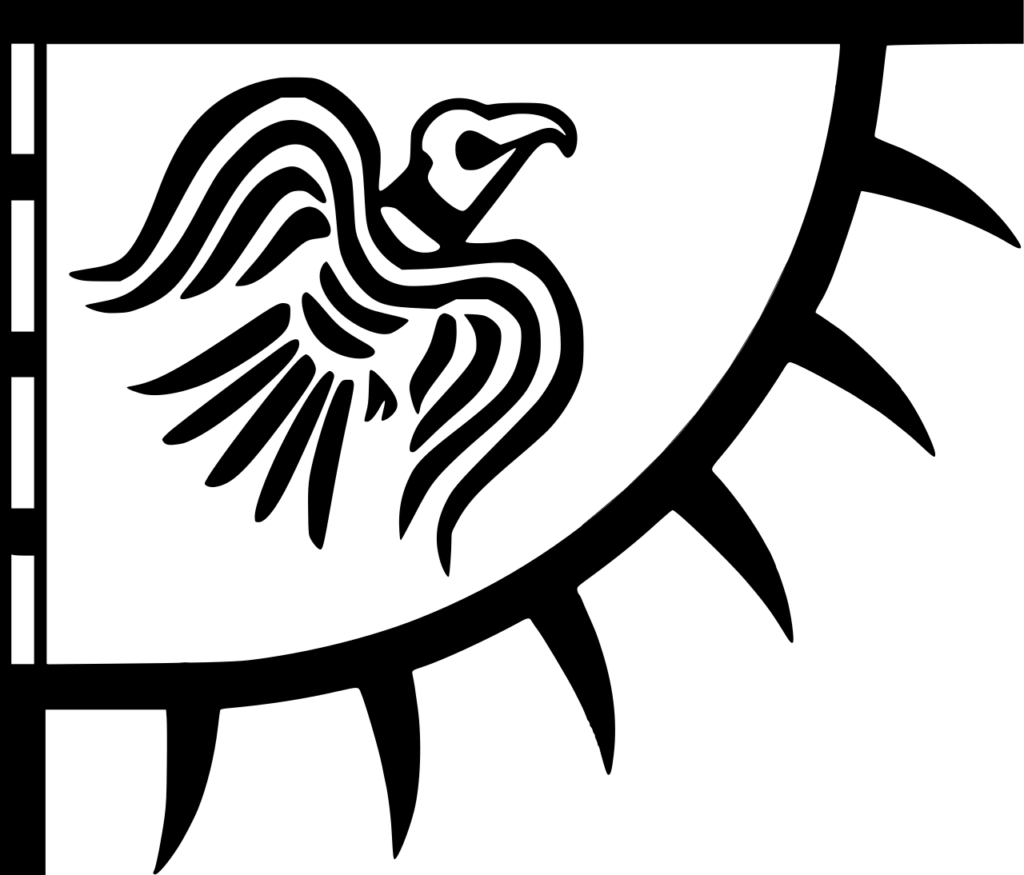
The historical evolution of the Norwegian flag is deeply intertwined with the country’s political and cultural history. Initially, Norway had no specific national flag, with rulers using personal banners.
During the Kalmar Union (1397-1523), a political union that united Norway with Denmark and Sweden under a single monarch, no specific flag represented the union. Each country within the union continued to use its flags and symbols.
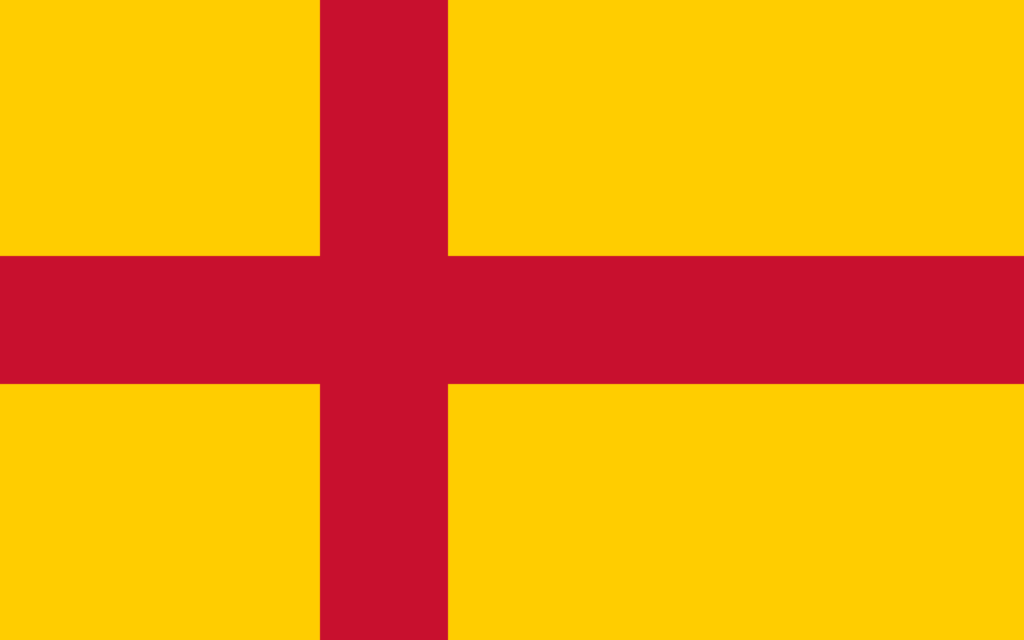
The concept of a unified flag for the entire union was not prevalent at the time, reflecting the nature of the union as a collection of independent states under a single ruler rather than a unified nation.
Post the Kalmar Union, during the periods of union with Denmark (up to 1814) and then Sweden (1814-1905), elements of these countries’ flags influenced the design of Norway’s flag.
This was particularly evident during the union with Sweden when the Norwegian flag incorporated the Union Badge from 1844 to 1899, symbolizing the union between the two nations.
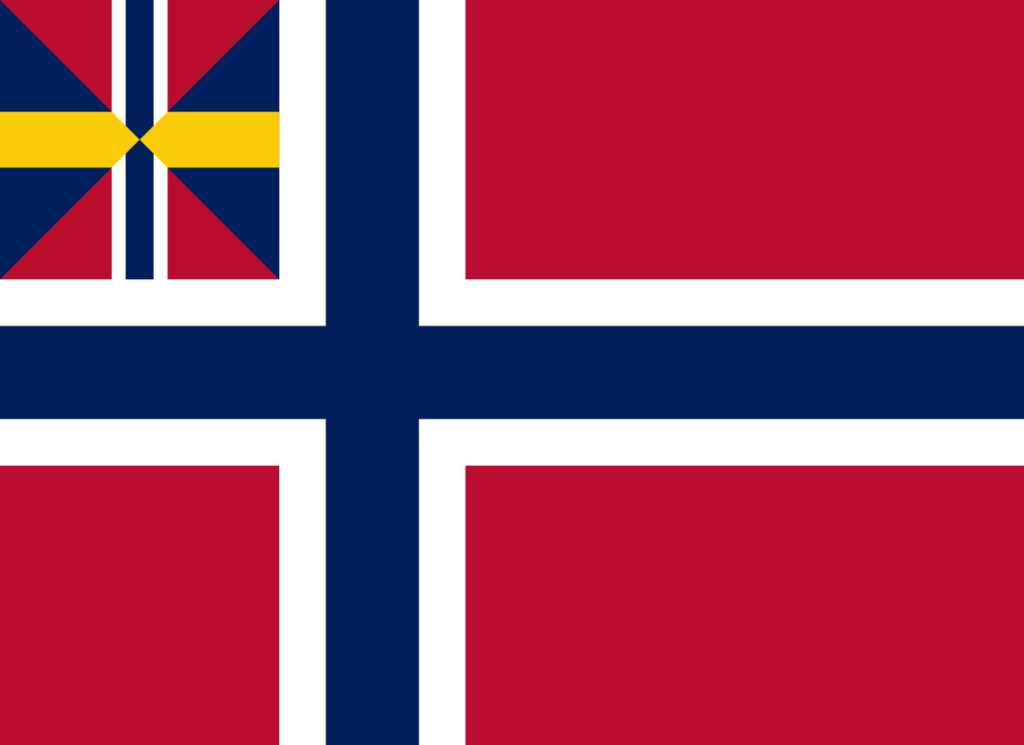
The modern Norwegian flag, featuring a red field with a blue Scandinavian cross, was introduced in 1821 by Fredrik Meltzer. Initially adopted for civilian use, it represented Norway’s growing national identity, distinct from its union partners.
This design was a nod to the shared cultural and religious heritage of the Nordic region.
After Norway’s independence from Sweden in 1905, the flag reverted to the 1821 design without the Union Badge. This design has remained unchanged today, symbolizing Norway’s enduring values and identity within the Nordic community.
The consistent use of this flag, through Norway’s historical unions and shifting political landscapes, highlights its role as a steadfast symbol of Norwegian independence and national character.
Overall Symbolic Meaning of the Flag
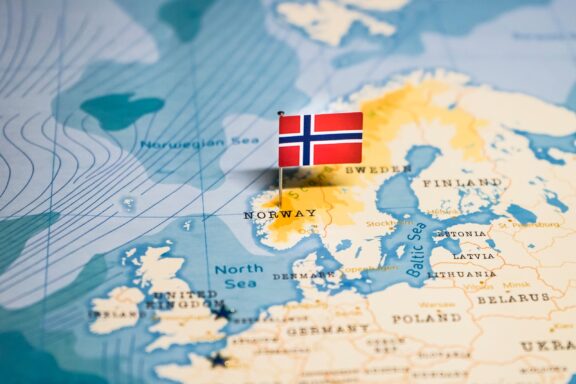
The Norwegian flag stands as a symbol of the nation’s unity, resilience, and forward-looking ethos. It represents not just national sovereignty but also the collective character and values of the Norwegian people, encapsulating their historical journey and aspirations for the future.
Similar Flags to the Flag of Norway
Several flags share similarities with Norway’s flag, primarily due to the common use of the Nordic cross design and similar color schemes, some of these are:
Sweden
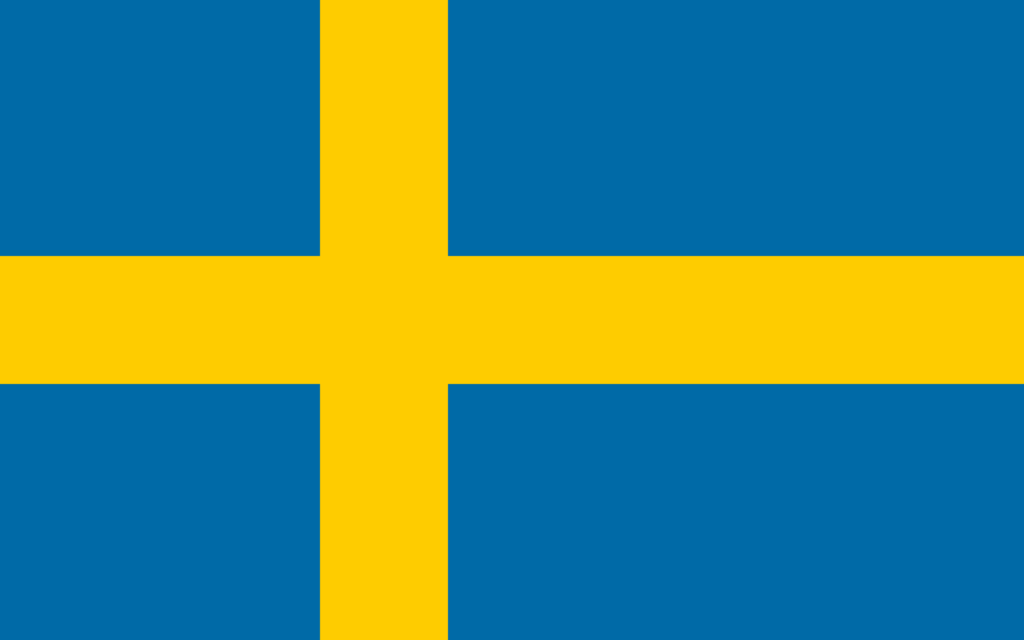
The Swedish flag’s blue and yellow colors represent the nation’s natural landscapes, with blue symbolizing its lakes and the Baltic Sea and yellow reflecting the country’s extensive fields and forests.
This flag is a source of pride for Swedes and reflects their deep connection to the natural beauty of their country and their historical links to other Nordic nations.
Denmark
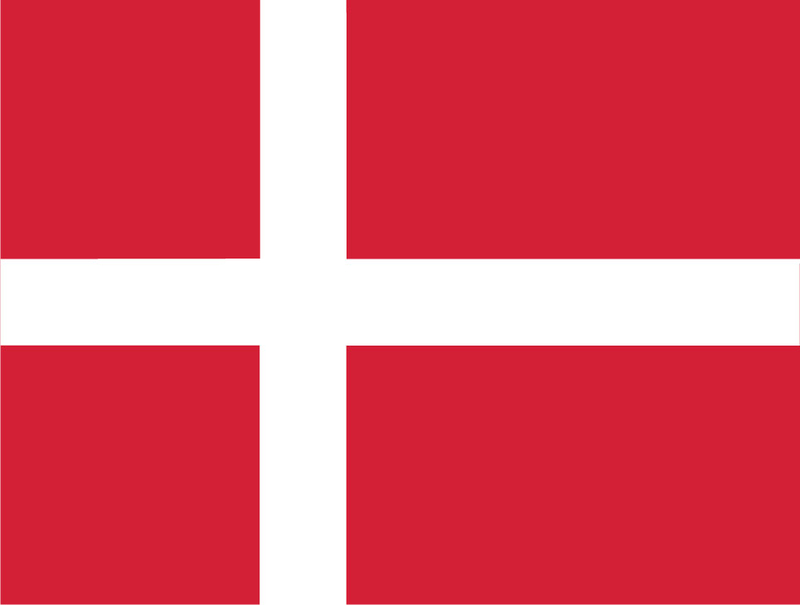
Known as the Dannebrog, the Danish flag is deeply intertwined with national legends and history, particularly the myth of its descent from heaven during a historic battle.
The oldest state flag in the world still in use symbolizes Danish heritage, continuity, and national pride, deeply resonating with the Danish people’s sense of identity.
Iceland
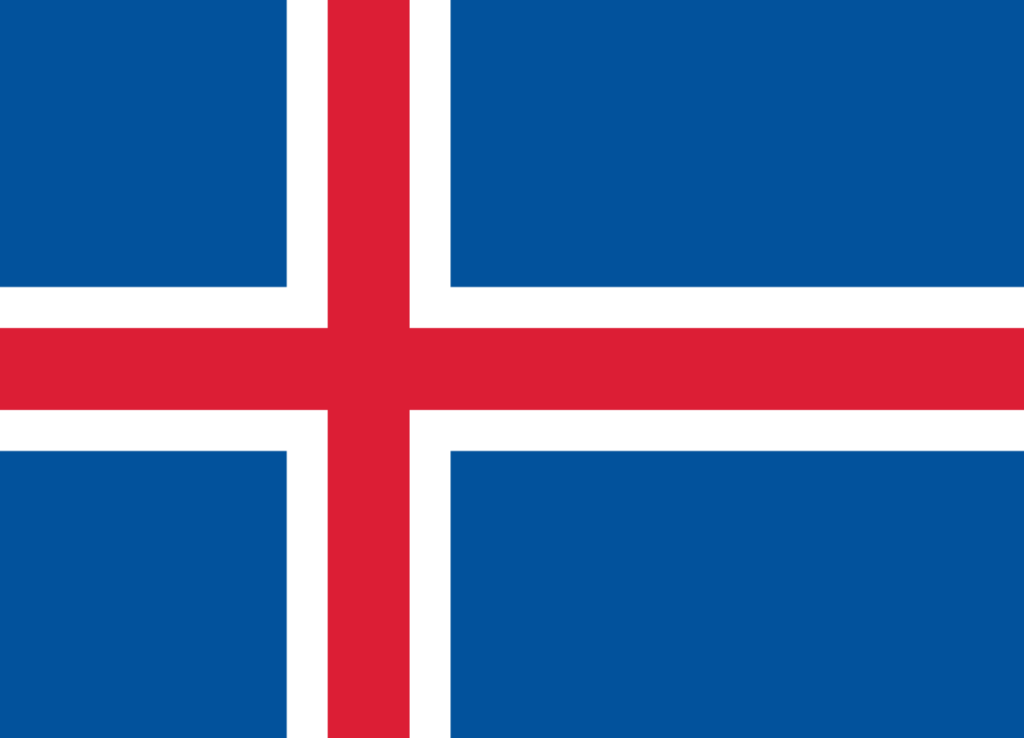
Iceland’s flag symbolizes its dramatic natural environment: the red represents the island’s volcanic fires, the white represents snow and ice, and the blue evokes the surrounding Atlantic Ocean.
This flag represents Iceland’s unique geographical features and cultural and historical ties to Scandinavia.
Faroe Islands
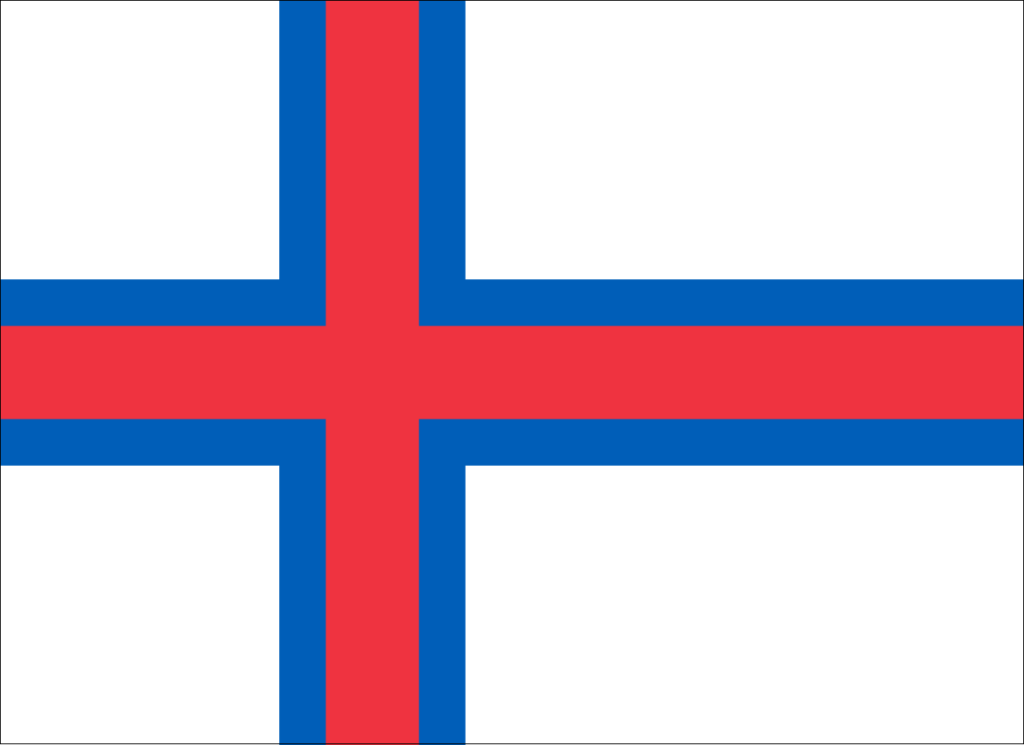
Although not a national flag, the Faroe Islands flag reflects its maritime heritage, with the red and blue cross symbolizing the Faroese seafaring tradition.
This flag embodies the islands’ autonomy, distinct cultural identity within the Nordic region, and historical connections to other Scandinavian nations.
Final Thoughts
With its distinctive design and colors, the Norwegian flag is revered in the global tapestry of national flags, symbolizing the nation’s unique heritage and values. It is a unifying emblem for its citizens, evoking pride and a deep national identity.
Image Sources and Copyright Information
- Norwegian Flags Waving During National Day Celebration: © JaHu83/Shutterstock
- Norway Flag Pin on Map: © hyotographics/Shutterstock